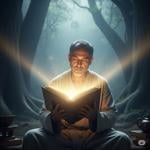DreamWorks Animation has raised the bar with its latest film, “The Wild Robot,” an adaptation of Peter Brown’s award-winning novel. Directed by Chris Sanders, whose previous works include “How to Train Your Dragon” and “Lilo & Stitch,” the film is powerful statement about the intersections of technology, nature, and what it means to truly live. With a blend of stunning animation, an all-star voice cast, and a story rich in heart and meaning, “The Wild Robot” is poised to be remembered not just as the best animated film of the year, but perhaps of the decade.

At the heart of “The Wild Robot” is Roz, a ROZZUM unit 7134, voiced by the incomparable Lupita Nyong’o. Roz’s story begins when she is shipwrecked on an uninhabited island after a transport accident, thrust into an unfamiliar world where her rigid programming is no match for the unpredictability of the wild. While initially her directive is mere survival, Roz’s journey quickly turns into one of self-discovery as she learns to navigate the island’s complex ecosystem, forming relationships with the animals that live there.
The central relationship in the film is between Roz and a gosling named Brightbill, whose voice is brought to life by Kit Connor. This mother-son dynamic is one of the most endearing and emotionally rich aspects of the movie. Roz, a robot programmed to complete tasks without emotion, becomes the adoptive mother to this orphaned gosling, and through her nurturing of him, she learns to break free from her cold, mechanical nature. She teaches him to fly, and in turn, his love and dependence on her transform Roz into something more than a machine—he inspires her to feel. Their relationship transcends the traditional expectations of both robot and animal, creating a heartwarming bond that tugs at the audience’s emotions.
In “The Wild Robot,” love isn’t just a force between Roz and Brightbill, it’s something that changes the entire island. Roz’s acts of kindness ripple outward, creating a community of animals that start to care for one another in ways they never had before. Her compassion and willingness to help others, despite the limitations of her programming, becomes a catalyst for unity.
This element of the story provides an important lesson for all ages: love and empathy are transformative powers that can reshape entire communities. Roz’s journey reminds us that we are not defined by the systems or instincts that govern us. Instead, we are shaped by the choices we make, and when we choose love, we can bring about real change in the world around us. In a deeper spiritual dimension, Christian believers are instructed to “clothe yourself in love” because “Love is what holds you all together in perfect unity” (Colossians 3:14).
Nyong’o’s portrayal of Roz is measured, yet heartfelt. Her performance, coupled with the vocal talents of Pedro Pascal as Fink, the wily fox, and Catherine O’Hara as Pinktail, an opossum with a penchant for drama, elevates the film. The casting of Bill Nighy as the wise goose Longneck, alongside Mark Hamill and Matt Berry in supporting roles, adds even more gravitas and charm to the film. The performances are nuanced and emotionally resonant, making it easy for viewers to connect with these animated characters.
What truly sets “The Wild Robot” apart, however, is its visual splendor. The animation is breathtaking, with the island’s lush, wild landscapes rendered in exquisite detail. DreamWorks has outdone itself in crafting an immersive world where nature and technology collide. Every frame is a visual treat, from the serene beauty of the island’s forests to the frenetic energy of Roz’s mechanical operations. The blending of organic and artificial elements is done so seamlessly that the viewer is left marveling at the balance the film strikes between these two worlds. It’s this visual storytelling that underscores the movie’s central themes, as Roz, a product of cold technology, becomes a crucial part of the natural world.
At its core, “The Wild Robot” is more than just a story about a robot surviving in the wilderness. It is a meditation on what it means to live, love, and be part of something greater than oneself. Roz’s journey from a programmed machine to a loving, self-aware being is a metaphor for the human experience—our capacity for growth, change, and connection. The film poses important questions about the boundaries between nature and technology, but more importantly, it offers profound answers about the power of love and community. Roz teaches us that we are not bound by the instructions we’re given, and that by choosing love over detachment, we can become the best versions of ourselves.
“The Wild Robot” is currently in theaters from Dreamworks Animation.













